Multi-resolution deblending with Scarlet:
Resampling, Detection and Astrometry

Rémy Joseph, Peter Melchior, Fred Moolekamp
CosmoStat: October 13, 2021
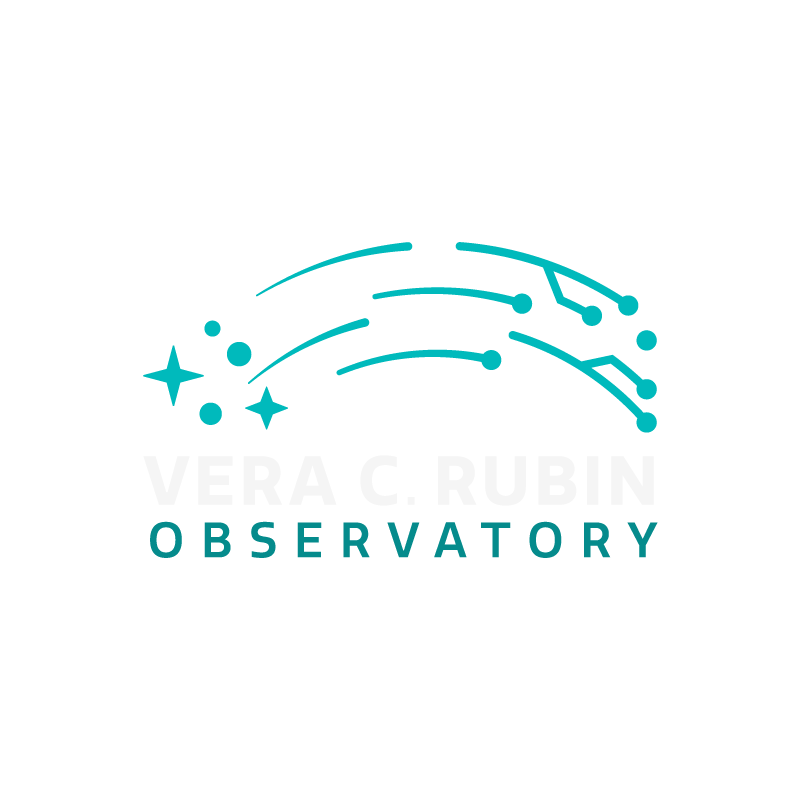

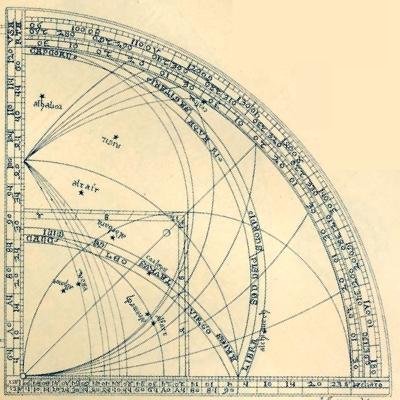
Oskar Klein Centre, Department of Physics, Stockholm University
Astronomy Data Lab, Department of Astrophysical Sciences, Princeton University


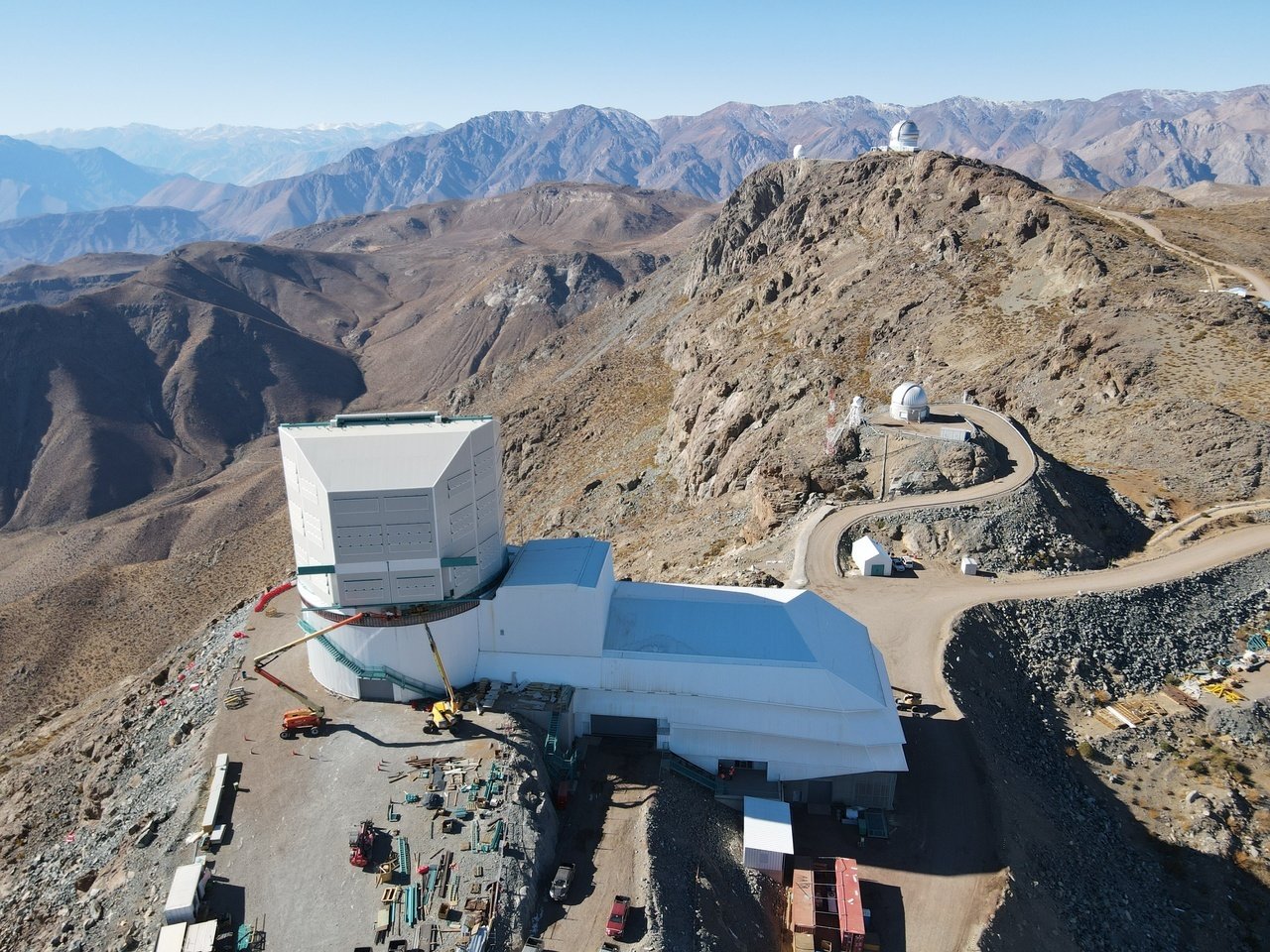
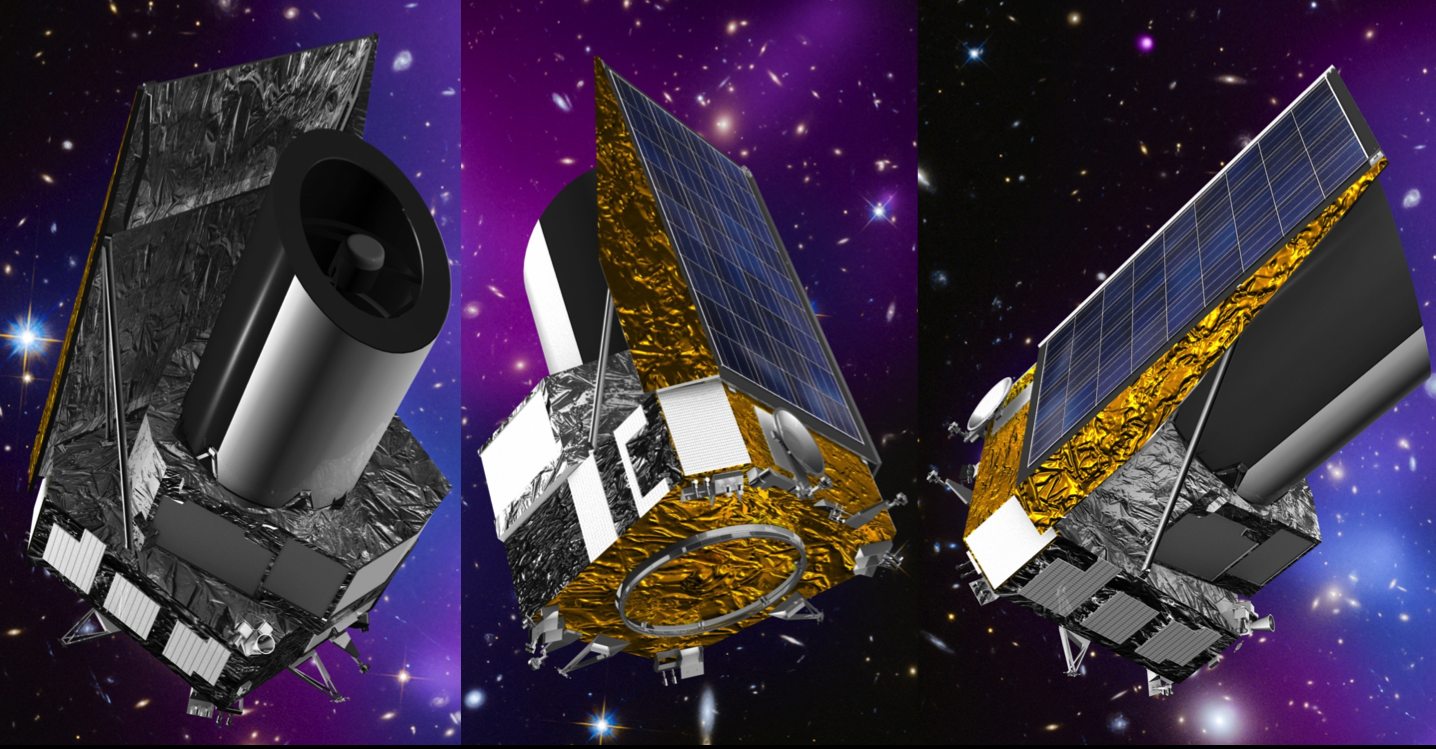
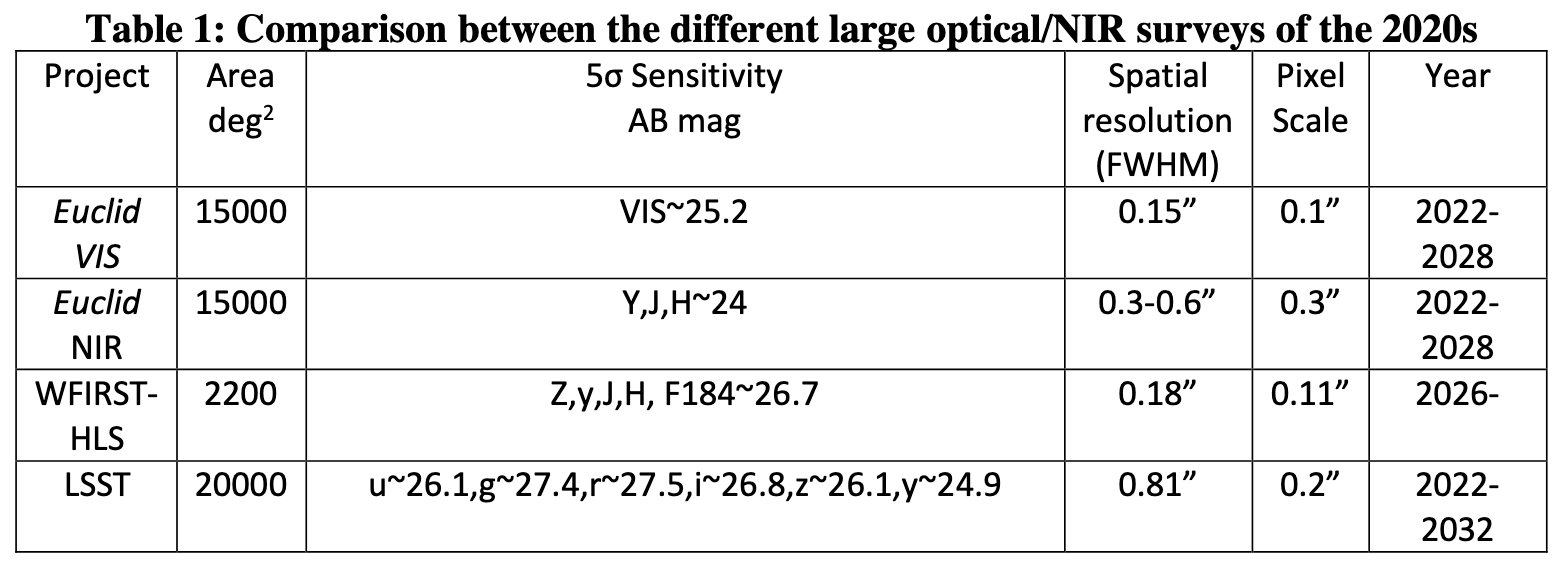
Rubin & Euclid
24.5
Rubin & Euclid
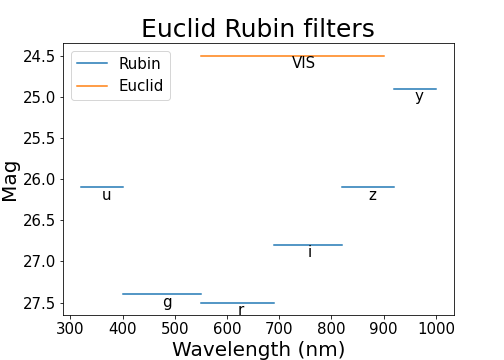

24.5
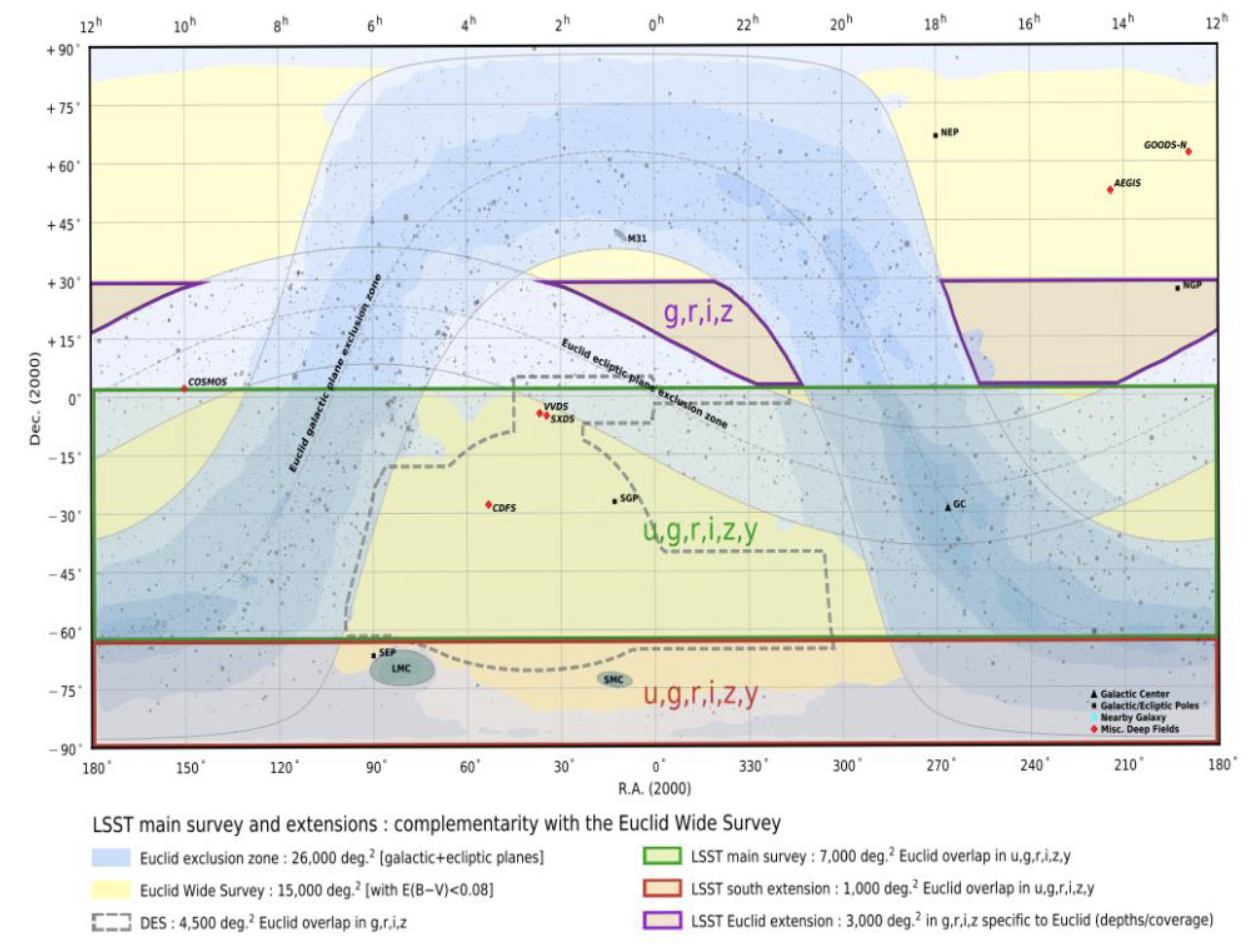
- Similar time-frame
- Wide observations
- Euclid's resolution
- Rubin's depth and colours
Blending
- In Rubin 63 % of galaxies are expected to be blended (Sanchez et al. 2021) vs. ~6% in Euclid (Sanchez private)
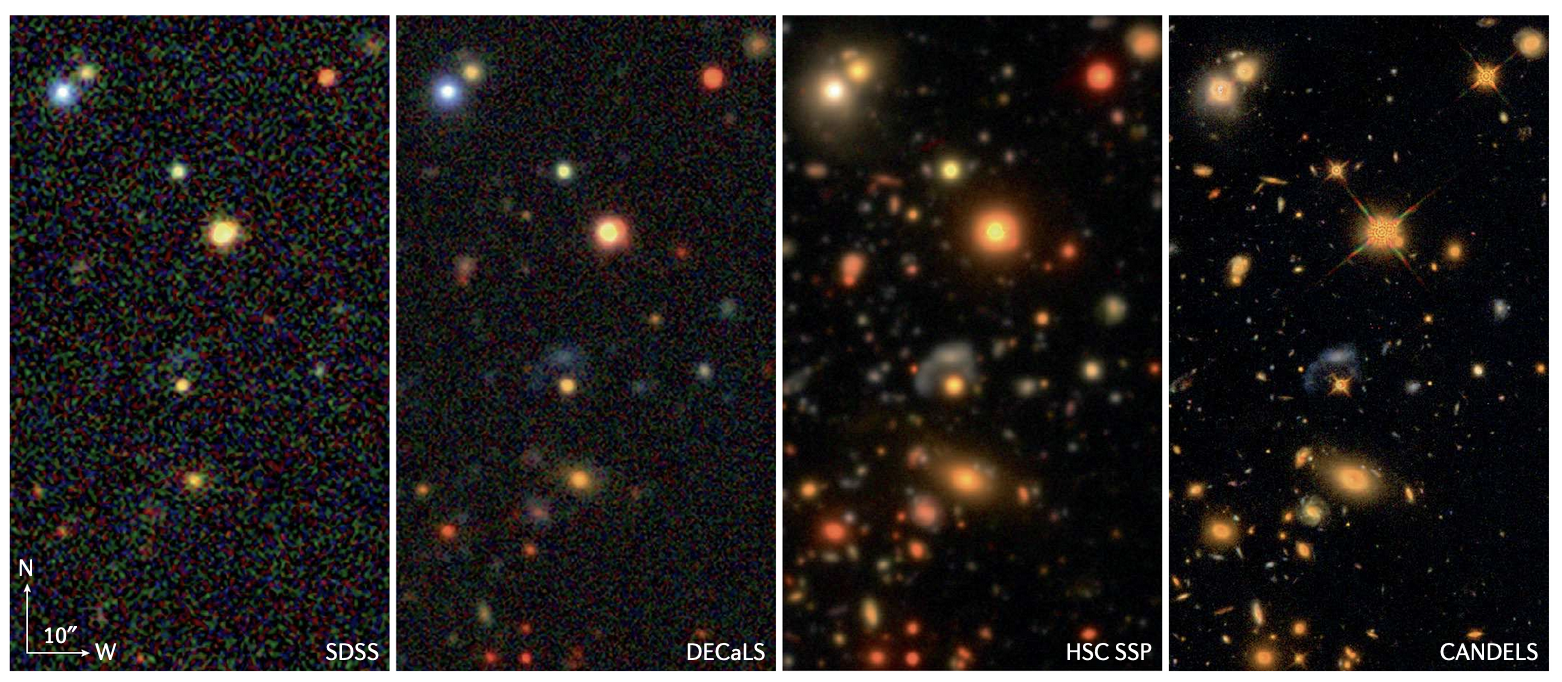

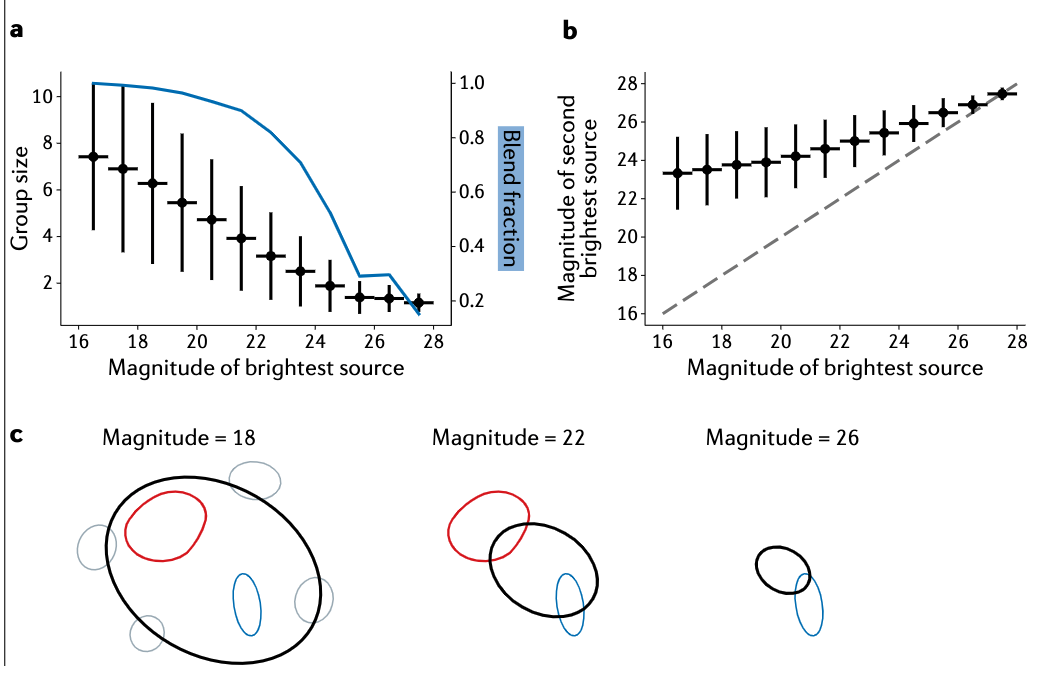
Blending
- In Rubin 63 % of galaxies are expected to be blended (Sanchez et al. 2021) vs. ~6% in Euclid (Sanchez private)
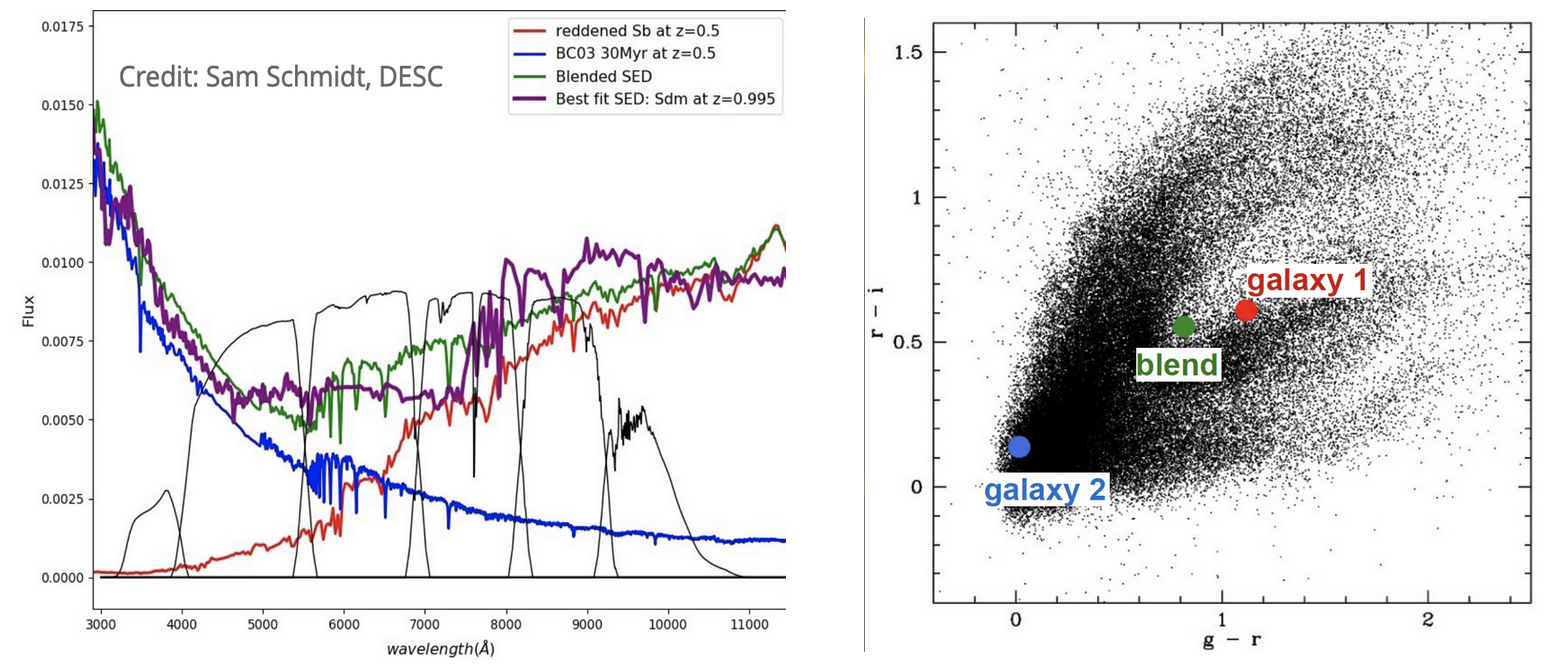
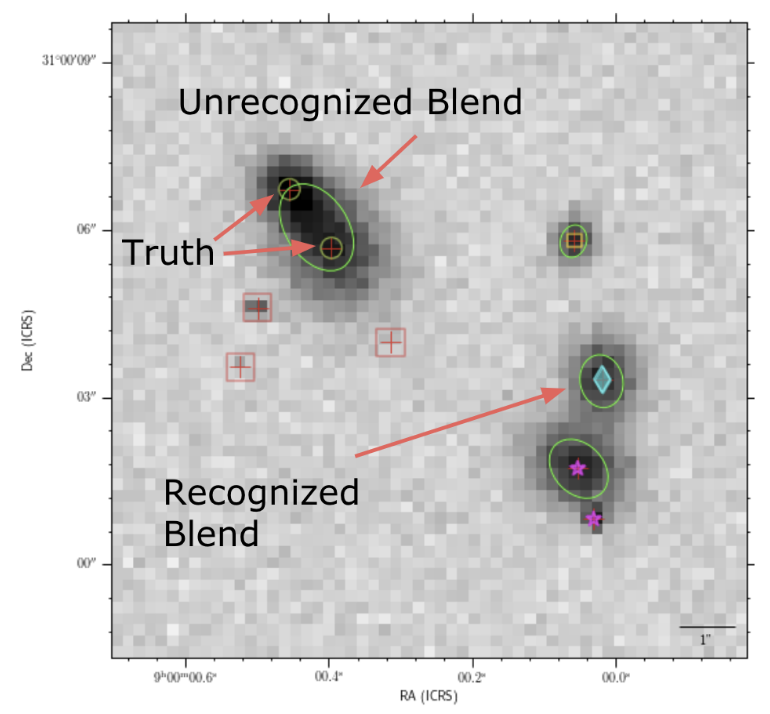
Credit: Erfan Nourbakhsh
Modelling astro images for
Deblending

Galaxy light profile
Telescope refraction (convolution)
Instrument acquisition (pixelation)
Instrumental noise
$$I_{j\in [1..k]} = H_j * \sum_{i} a_{j,i}m_{i} + N_j$$
Multi-band multi-resolution multi-source images
- Accounting for colour: spectral coefficients \( a_{j,i}\)
- Each band has a different PSF
- Each resolution has different sampling
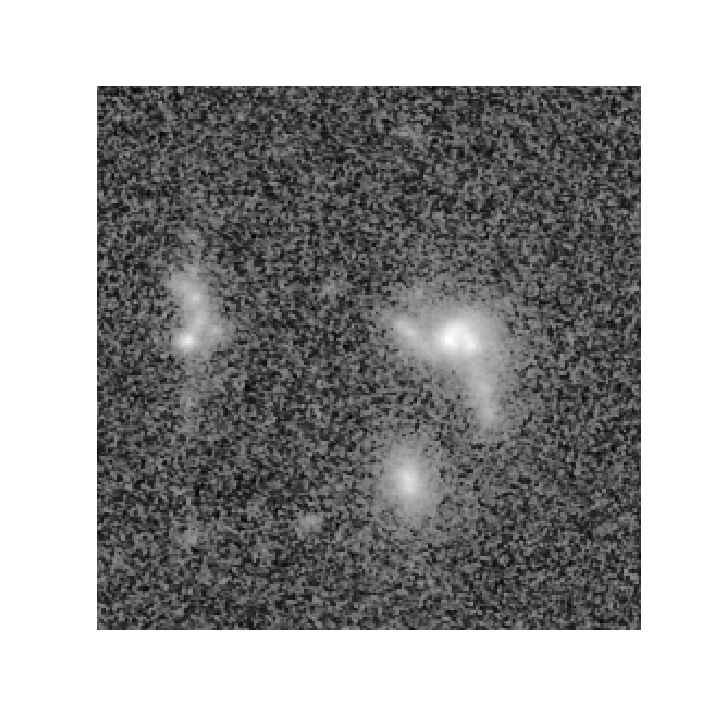
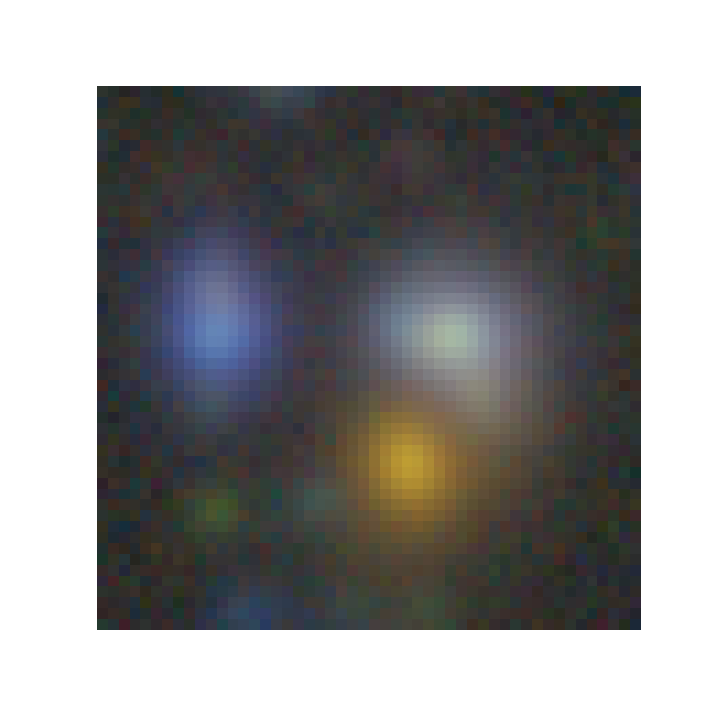
HST cosmos, F814w
HSC DR2, grizy
\(I_1\)
\(I_{2...}\)
$$I_{j> k} = H_j * \sum_{i} a_{j,i}m_{i} + N_j$$
pixels
wavelength
pixels
pixels
Multi-resolution deblending: Same idea, different resolutions


HST cosmos, F814w
HSC DR2, grizy
\(I_1\):
\(I_2\):
pixels
The problem of speed
$$I_{j\in [1..k]}[x,y] = H_j * \sum_{i} a_{j,i}m_{i}[x,y] + N_j$$
$$I_{j>k}[X,Y] = H_j[X,Y,x,y] * \sum_{i} a_{j,i}m_{i}[x,y] + N_j$$


HST cosmos, F814w
HSC DR2, grizy
\( H_j[X,Y,x,y] \) Needs to account for interpolation between grids.
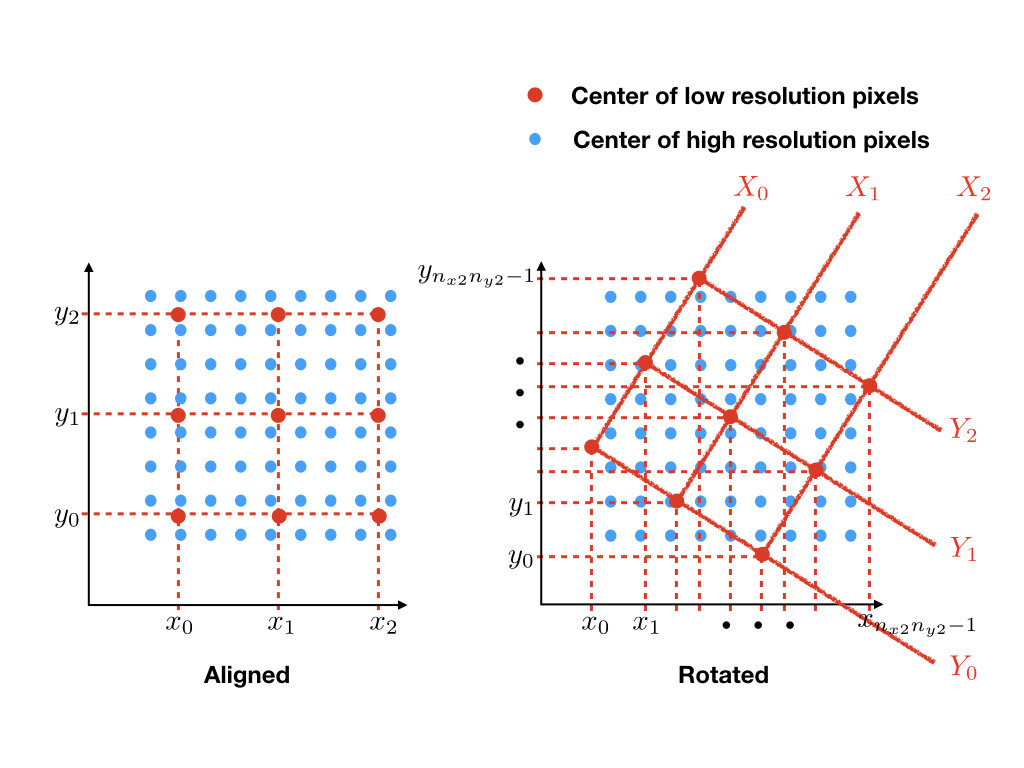
The problem of speed
Interpolation of a convolution product:
$$I_{[X]} = S_{[X-x']}H_{[x']}*S_{[X-x]}M_{[x]}$$
$$I_{[X]} = S_{[X-x'-x]}H_{[x']}*M_{[x]}$$
$$I_{[X]}=H'_{[X-(x'+x)]}M_{[x]}$$


HST cosmos, F814w
HSC DR2, grizy

Comparison with galsim:
Galsim quintic interpolation:
Interpolation kernel is reduced to a quintic kernel of size kxk = 6x6. requires s=4-fold padding.
Complexities:
- Galsim's default: $$O(N^2(k^2+s^2log(sN))+M^2(3+log(M)))$$
- Scarlet: $$O(N^2(M+1)(log(N)+M))$$
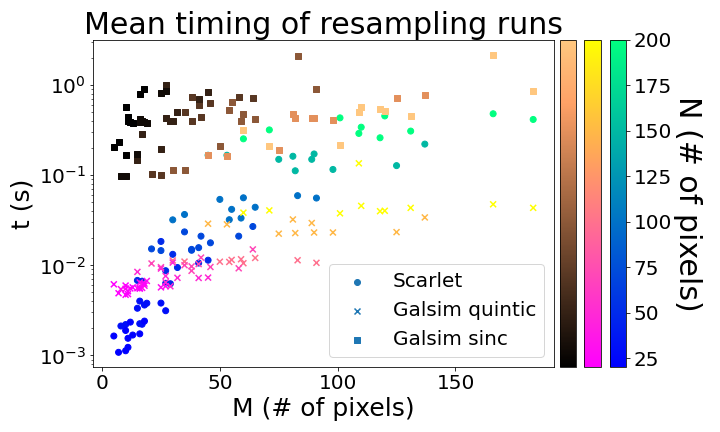
Comparison with galsim:
Reconstructions
Comparison of source distortion ratios between Galsim's default and Scarlet interpolations
$$SDR(\tilde{X}) = 10\log_{10}(\frac{||X_{true}||}{||\tilde{X} - X_{true}||} )$$
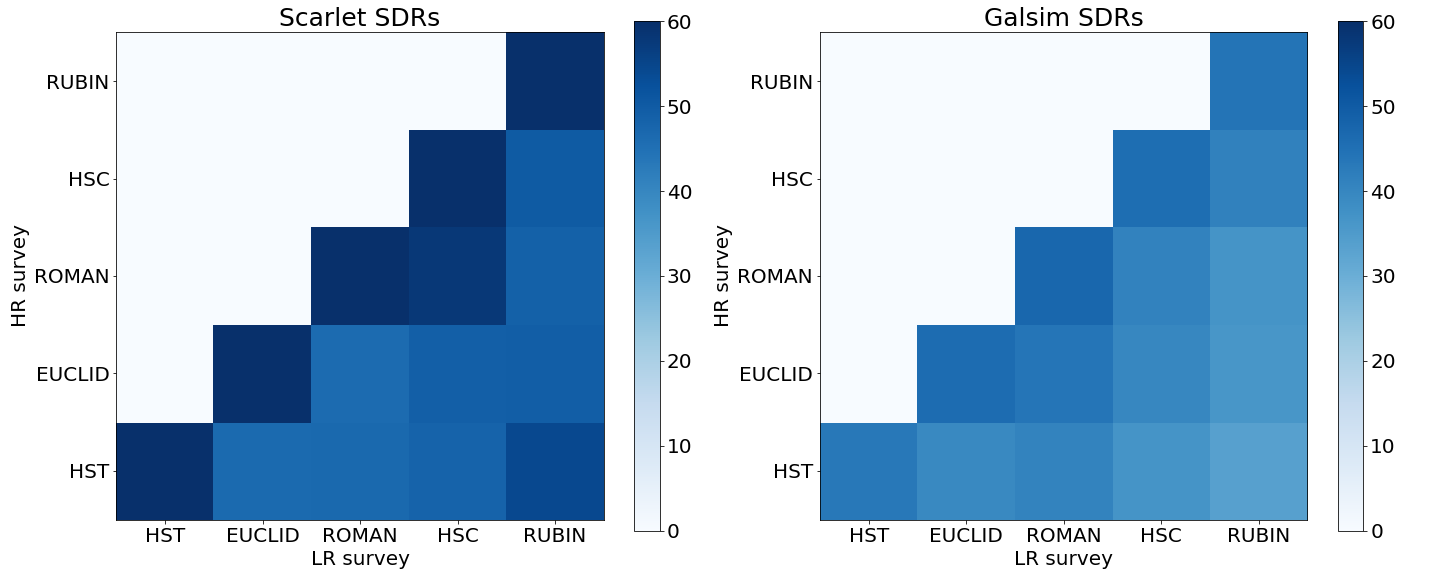

SCARLET
Melchior et al. 2016 ( arXiv:1802.10157)

Constrained optimisation: Positivity, Monotonicity, Bounding.


HST cosmos, F814w
HSC DR2, grizy
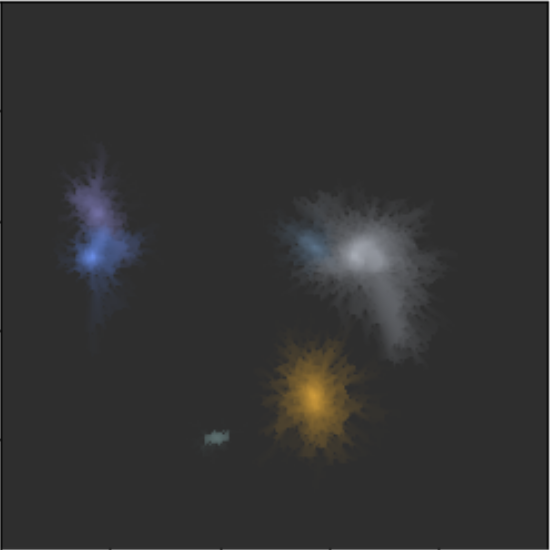
Scarlet model
1
2
4
3
5
6
Multi-resolution vs single resolution
Experimental test results on simulations with real galaxy profiles (EUCLID+RUBIN):
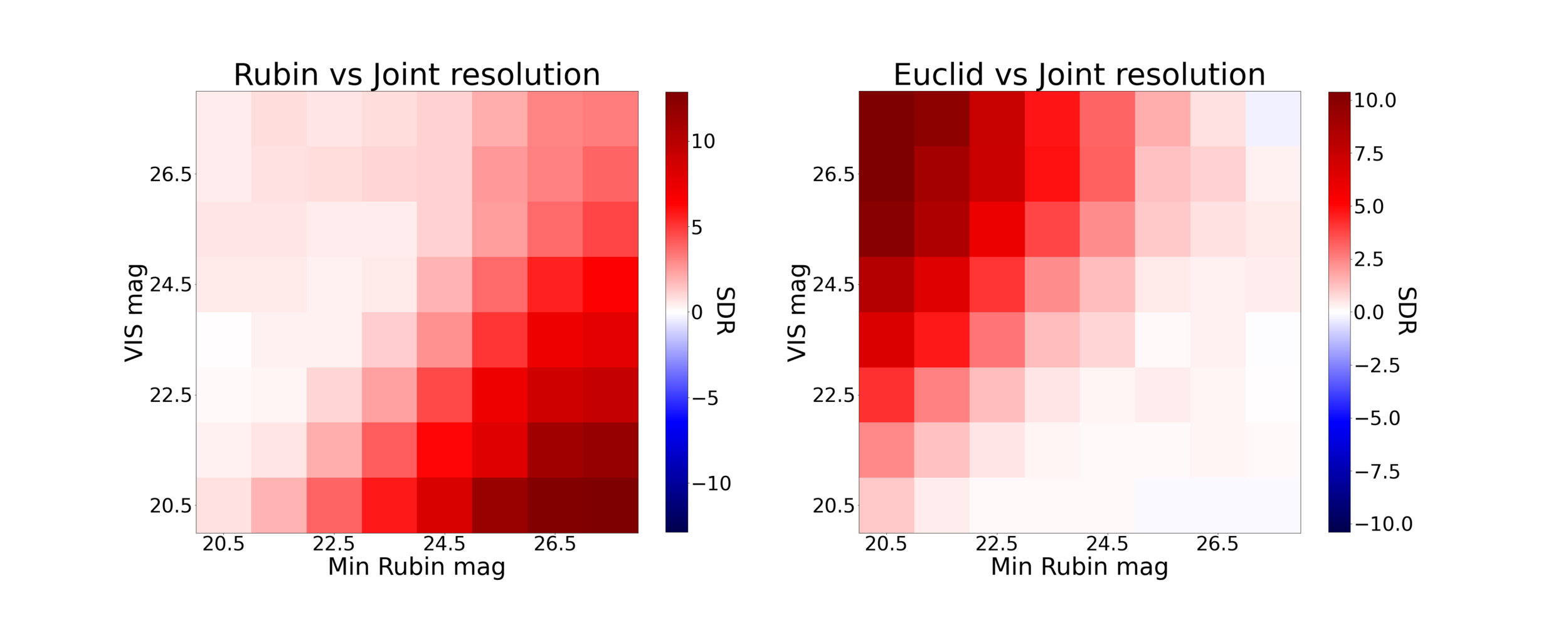

The problem of detection
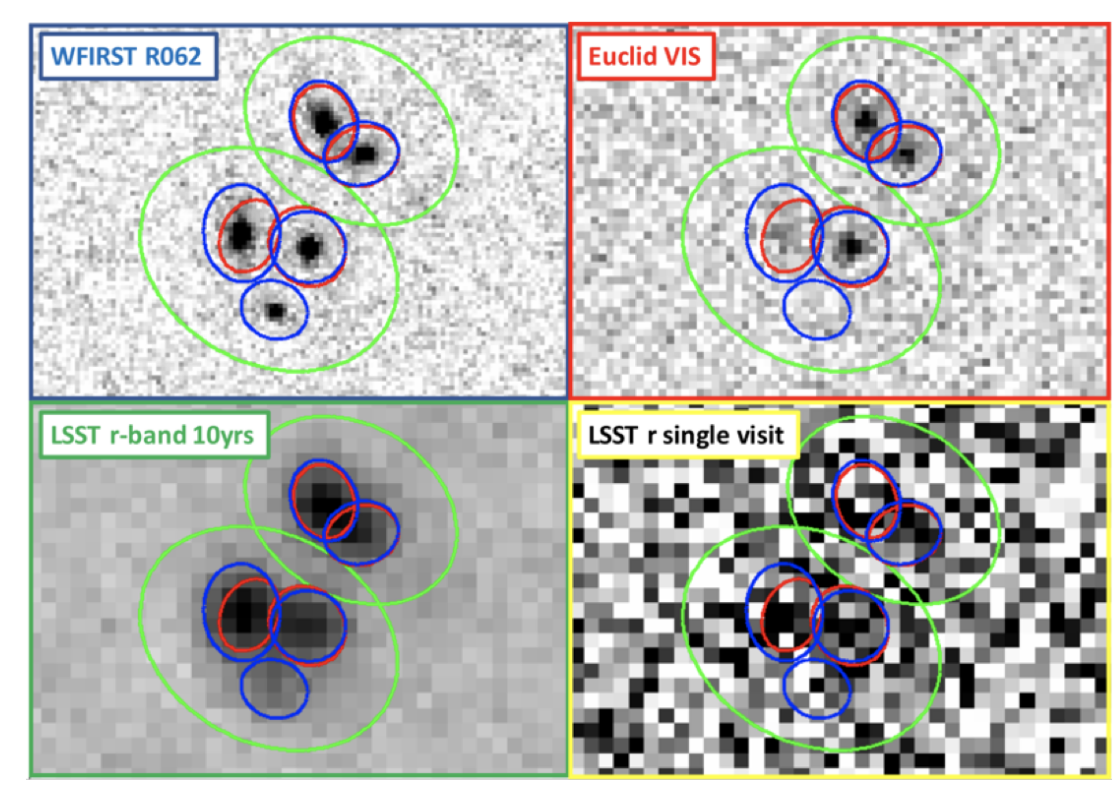
Credit: Ranga Ram Chary
The problem of detection
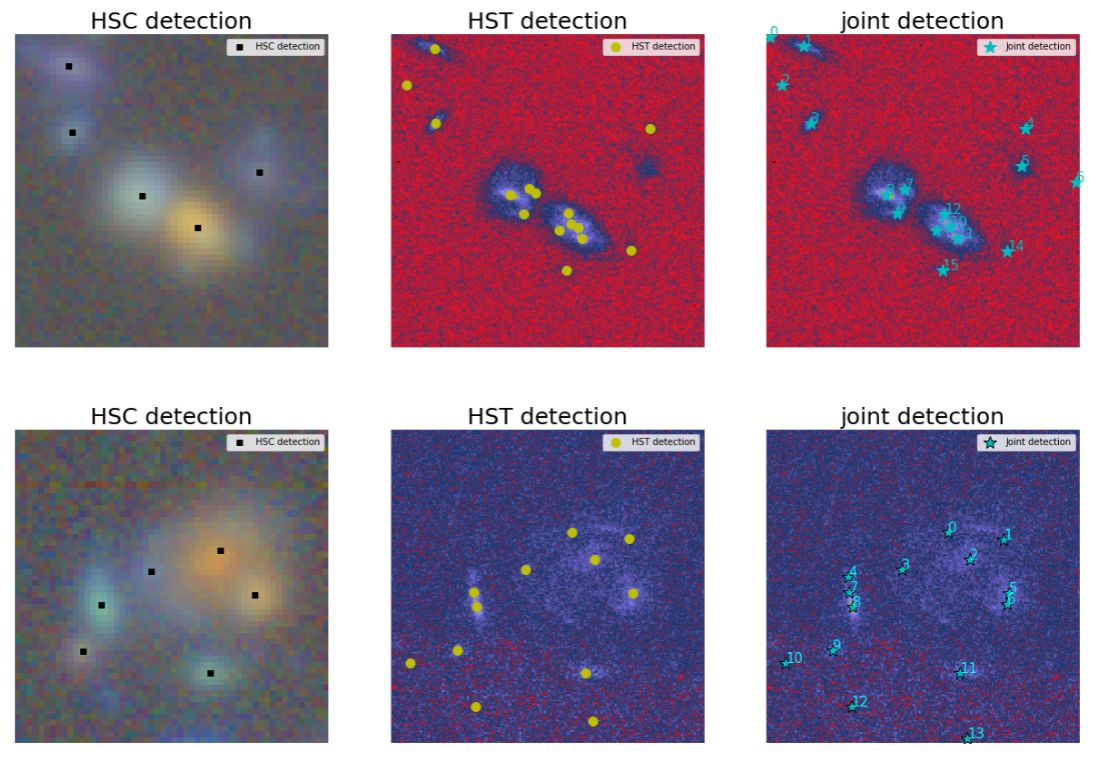


Multi-band detection with SEP:
- Build a coadd of all bands
- Apply Starlet filter to select High frequencies
- Run sep on the filtered Coadds
Multi-resolution detection
- Interpolation of low resolution image to high resolution
- Coadd interpolated images and High resolution bands
- Idem as before
Astrometry

COSMOS Fields

Matching observations, requires matching object positions
Astrometry
HST - HSC positions
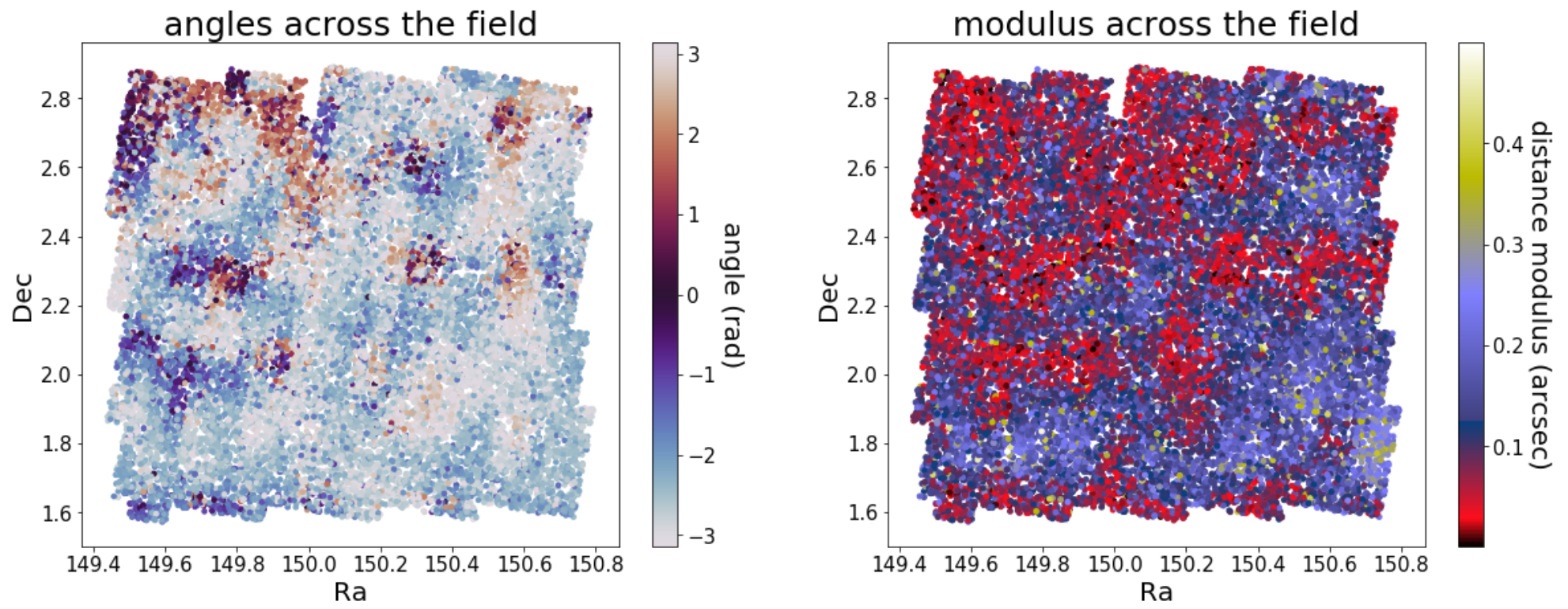
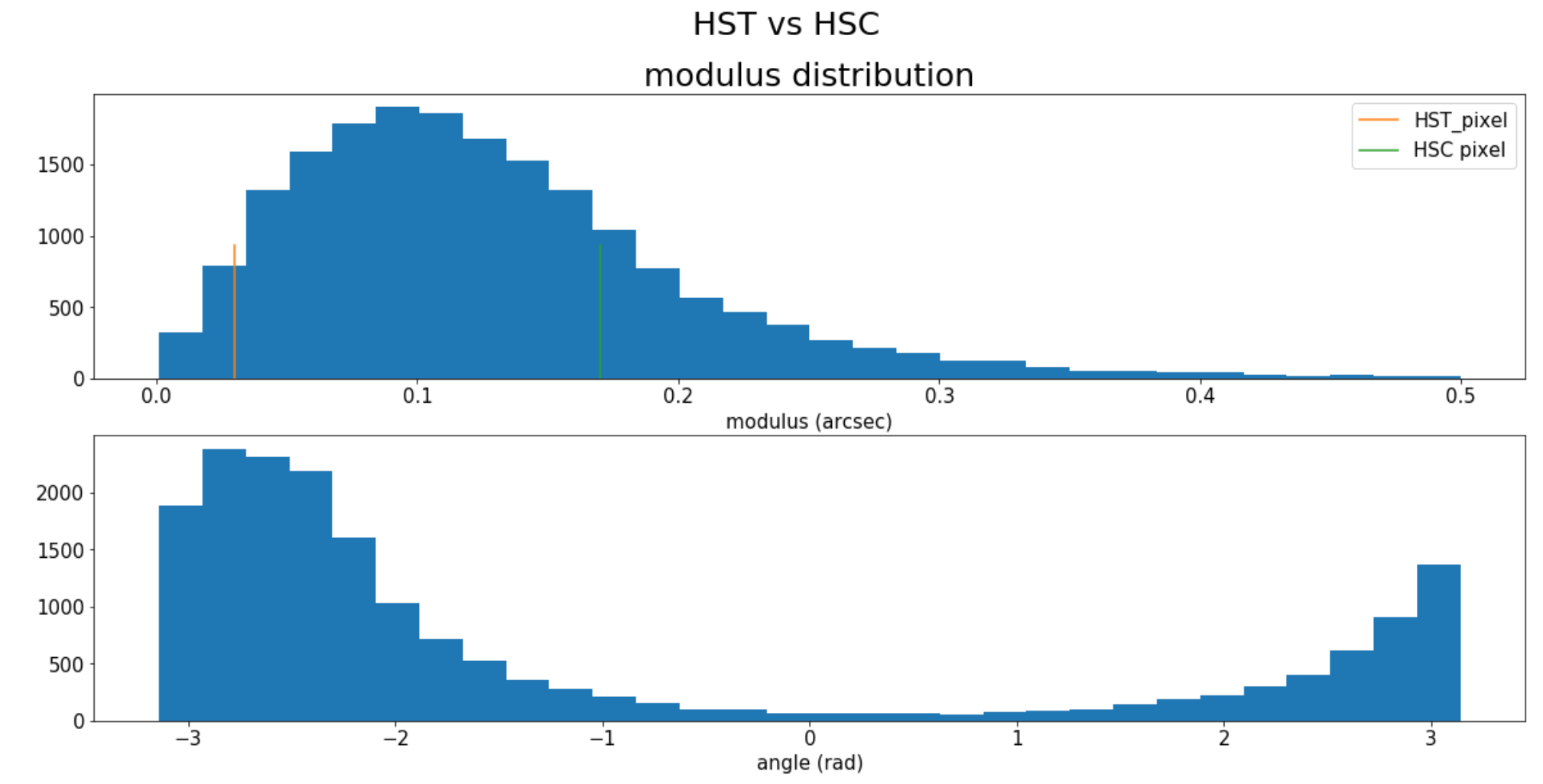
HSC s18 dud catalog
Astrometry
HSC s18 dud catalog
Gaia dr2
HSC - Gaia
HST - Gaia
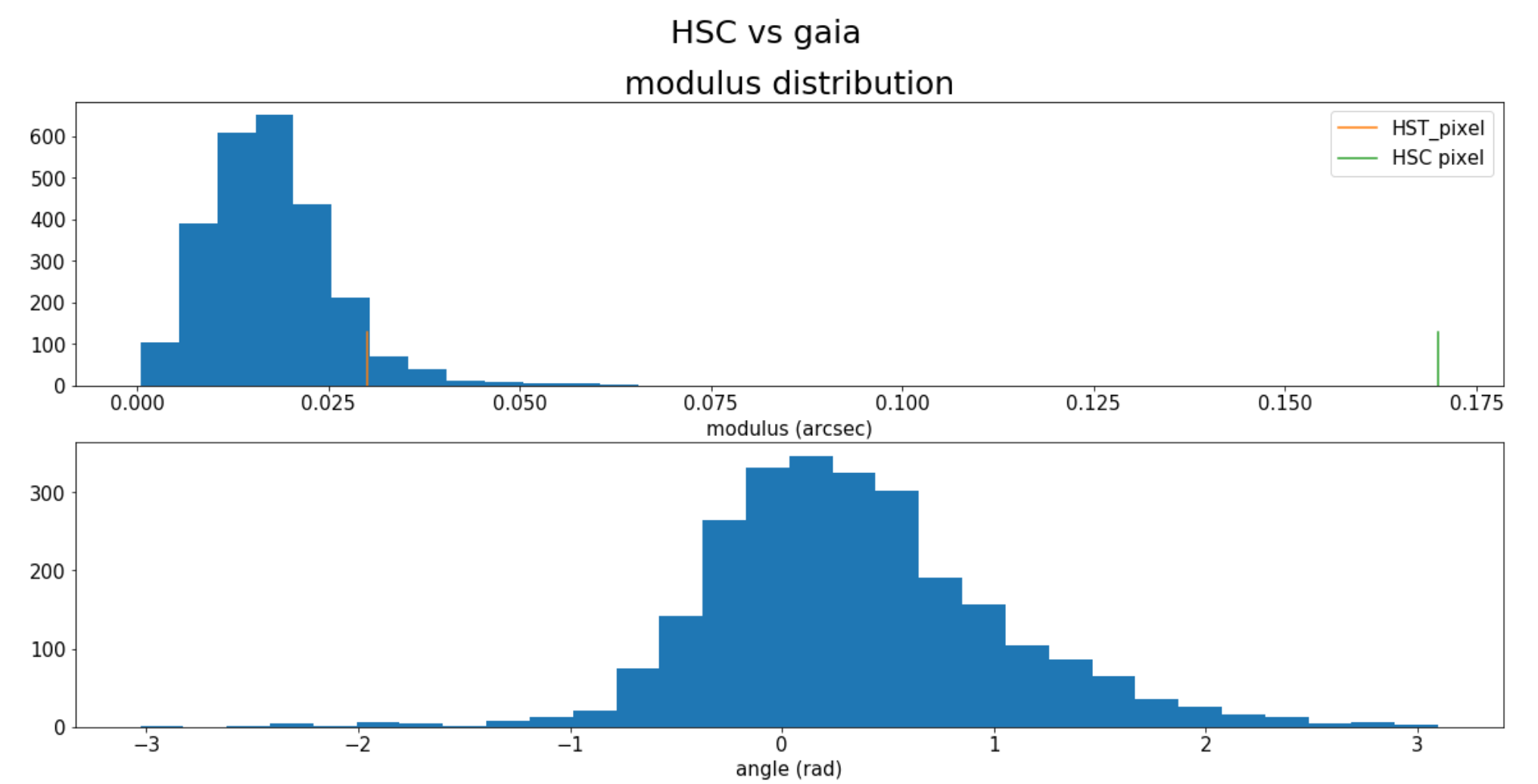
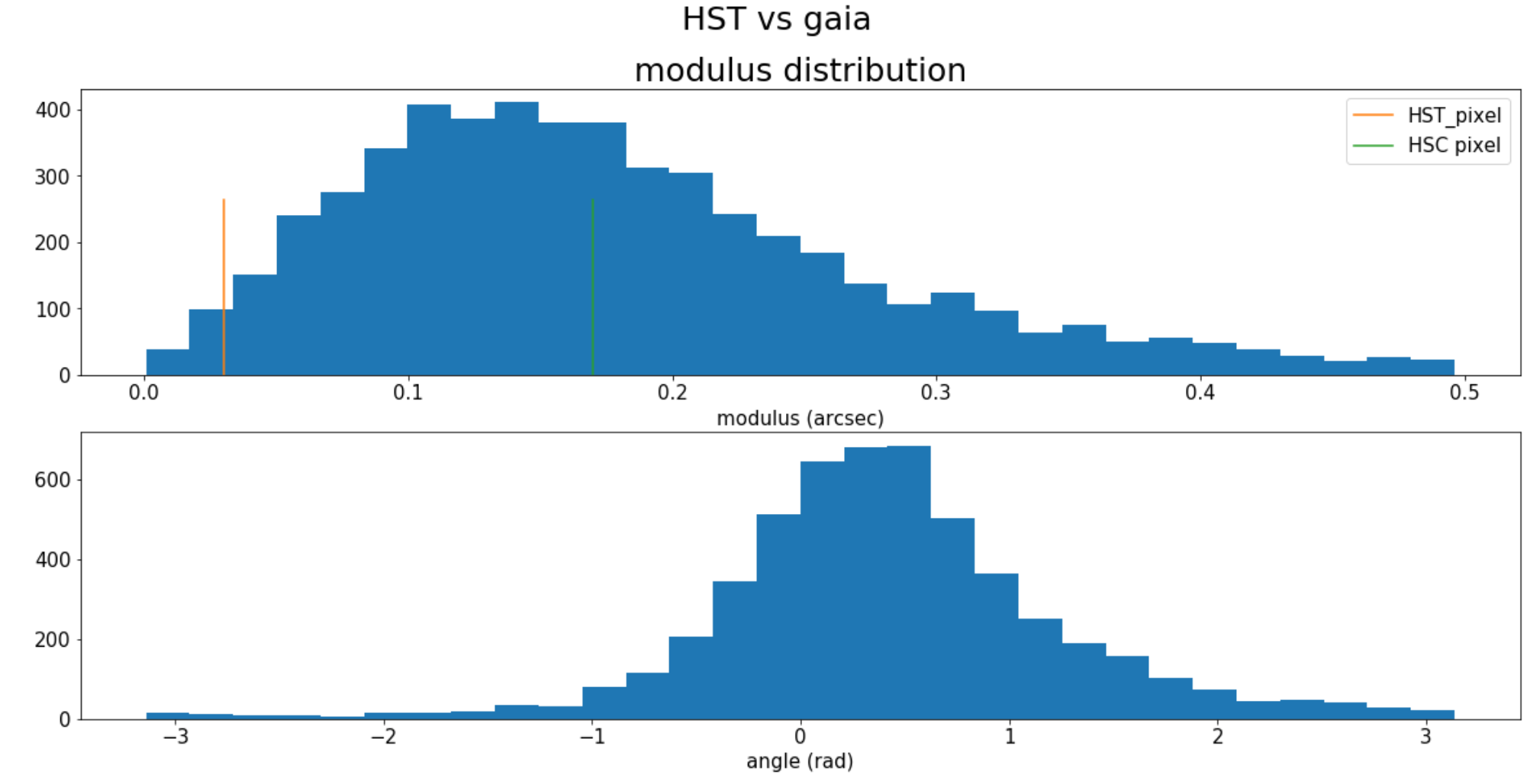
Ongoing applications
- Pan-sharpening for strong gravitational lens visual inspection
- Quasar host separation
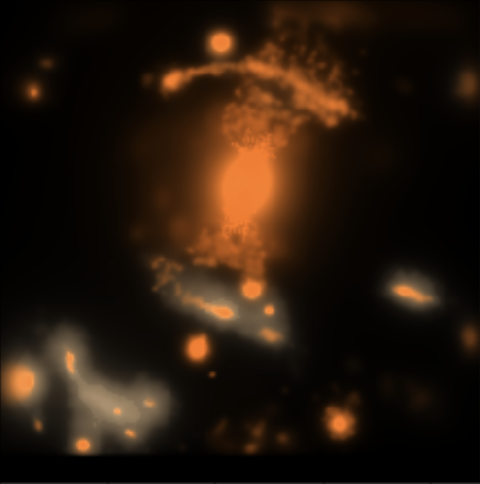
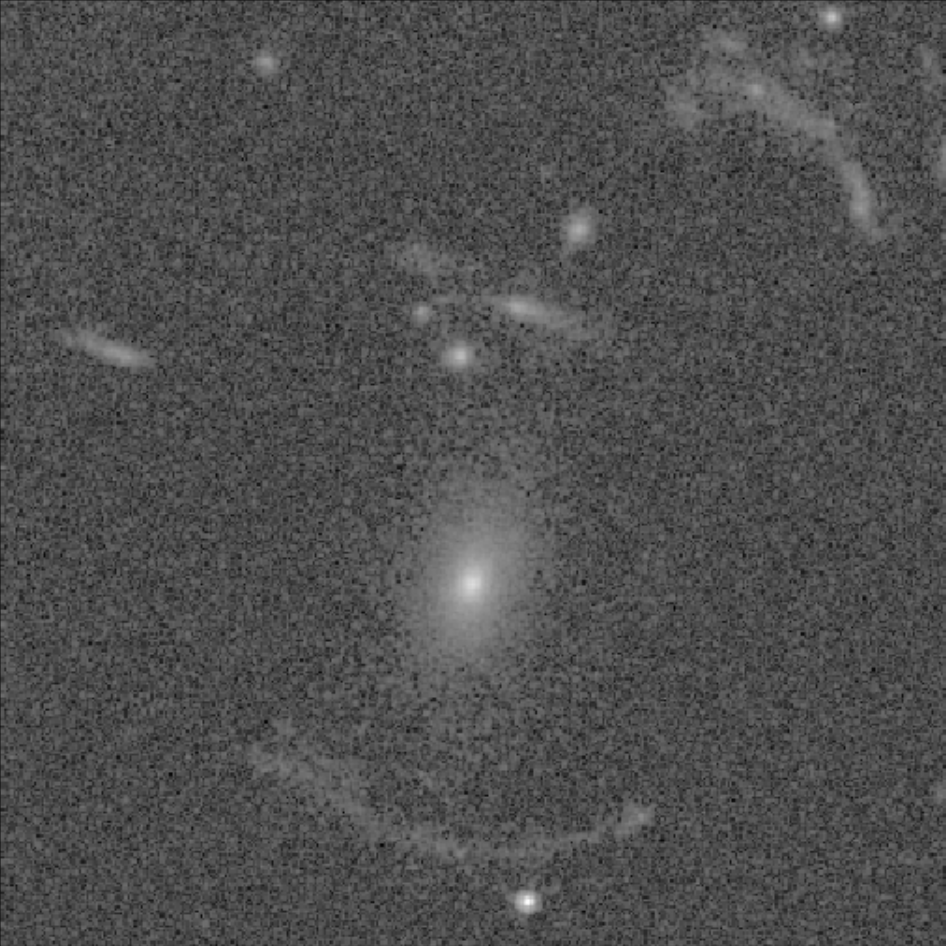
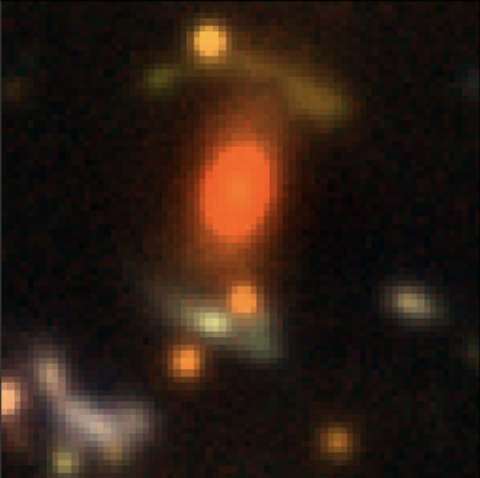
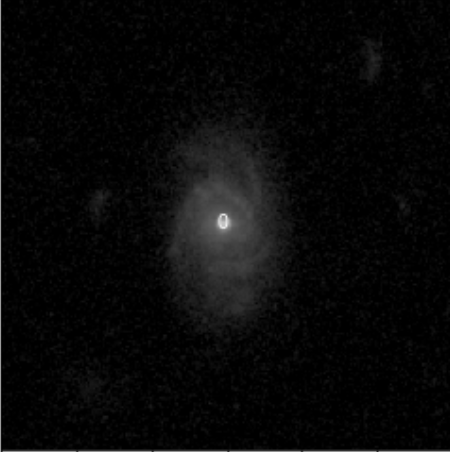
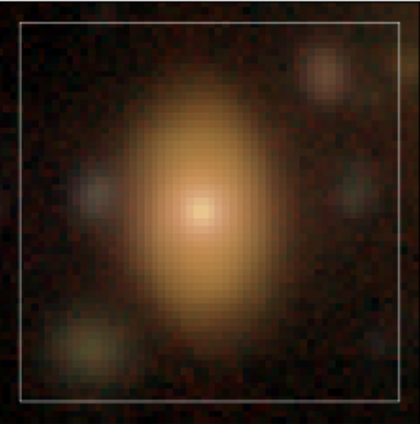
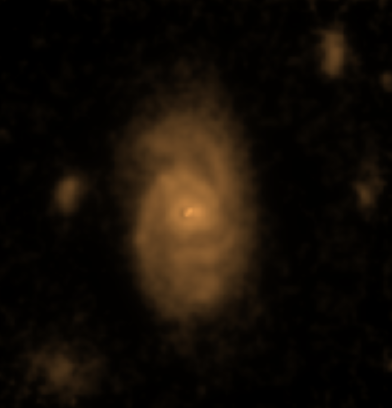
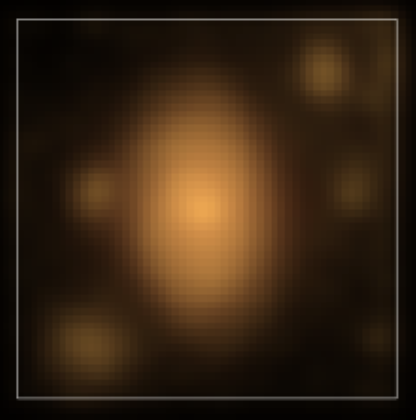
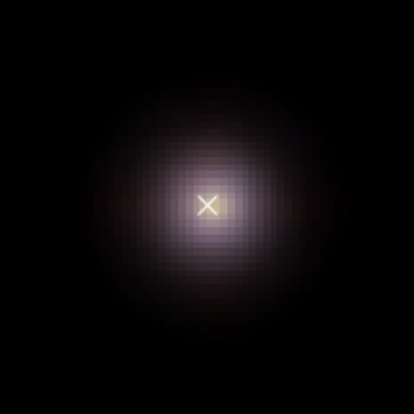



HST cosmos, F814w
HSC DR2, grizy
Scarlet model
1
2
4
3
5
6
1
2
4
3
5
6
Multi-resolution in Scarlet
Takes advantage of both colour and resolution
Next steps:
- Quantify the gain from multi-resolution detection
- Test multi-detection vs multi-resolution
- Quantify the allowed astrometric error
- Investigate alternative/faster resampling
- Limited processing of COSMOS data
Interpolation kernel is actually a sinc
\(f_2(X) = (f_1*P)(X) = (\sum_{x_k} f_1(x_k)sinc(\frac{X-x_k}{h}))*(\sum_{x_p}P(x_p)sinc(\frac{X-x_p}{h}))\)
\(f_2(X) = (f_1*P)(X) = \sum_{x_k} f_1(x_k)\sum_{x_l}P(x_l)sinc(\frac{X-x_k - x_l}{h})\)
\(f_2(X) = (f_1*P)(X) = \sum_{x_k} f_1(x_k)\sum_{x_l}P(x_l- X)sinc(\frac{x_k + x_l}{h})\)
Making sure we get the pixel response right
\(I_2(x_{i2},y_{j2}).\) = \((rect_{h_1}*(f*p_1) *{F}^{-1}(\frac{\hat{rect_{h_2}}}{\hat{rect_{h_1}}}\frac{\hat{p_2}}{\hat{p_1}}))(x_{i2},y_{j2})\)
\(I_2(x_{i2},y_{j2}) = (rect_{h_2}*p_2*f)(x_{i2},y_{j2})\)
Scarlet default:
Multi-band deblending

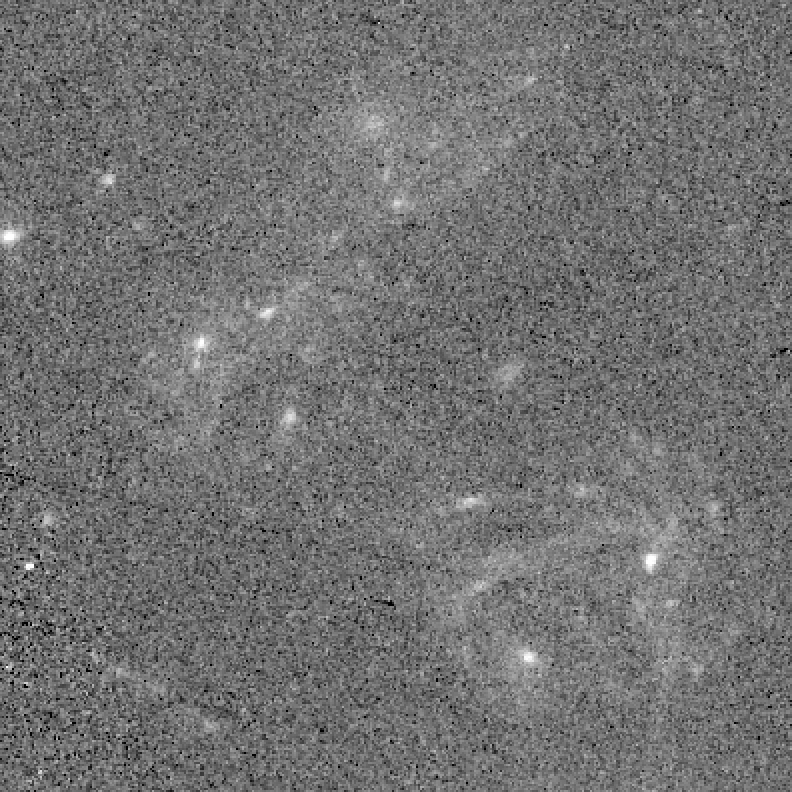
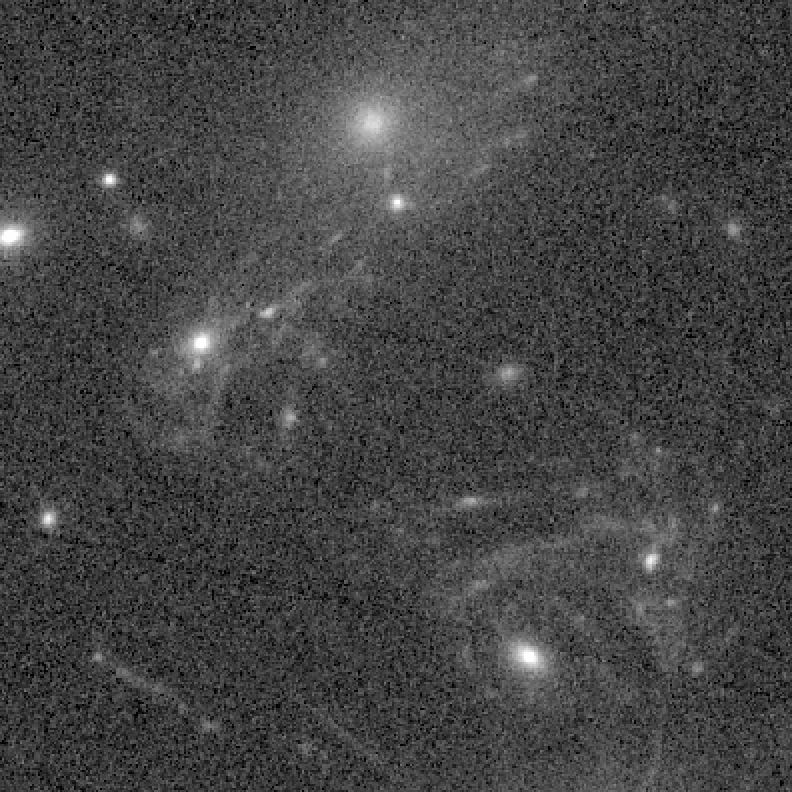
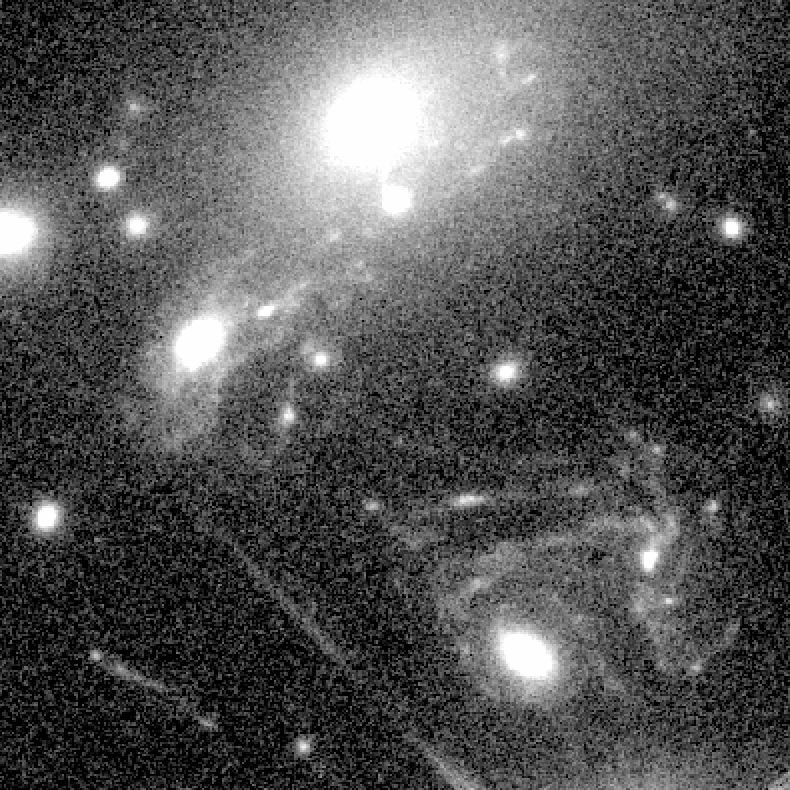
F435w
F606w
F814w
NASA/ESA: Hubble Frontier Fields, MACSJ 1149, Lotz et al. (2016)
- RGB images are collections of band in different filters
SCARLET
- Colour-based: each band is a linear combination of monochromatic components
F435w: \(I_2\)
F606w: \(I_1\)
F814w: \(I_0\)
$$I_j = H_j * \sum_i a_{j,i}m_i + N_j$$
$$m_0$$
$$m_1$$
$$I$$
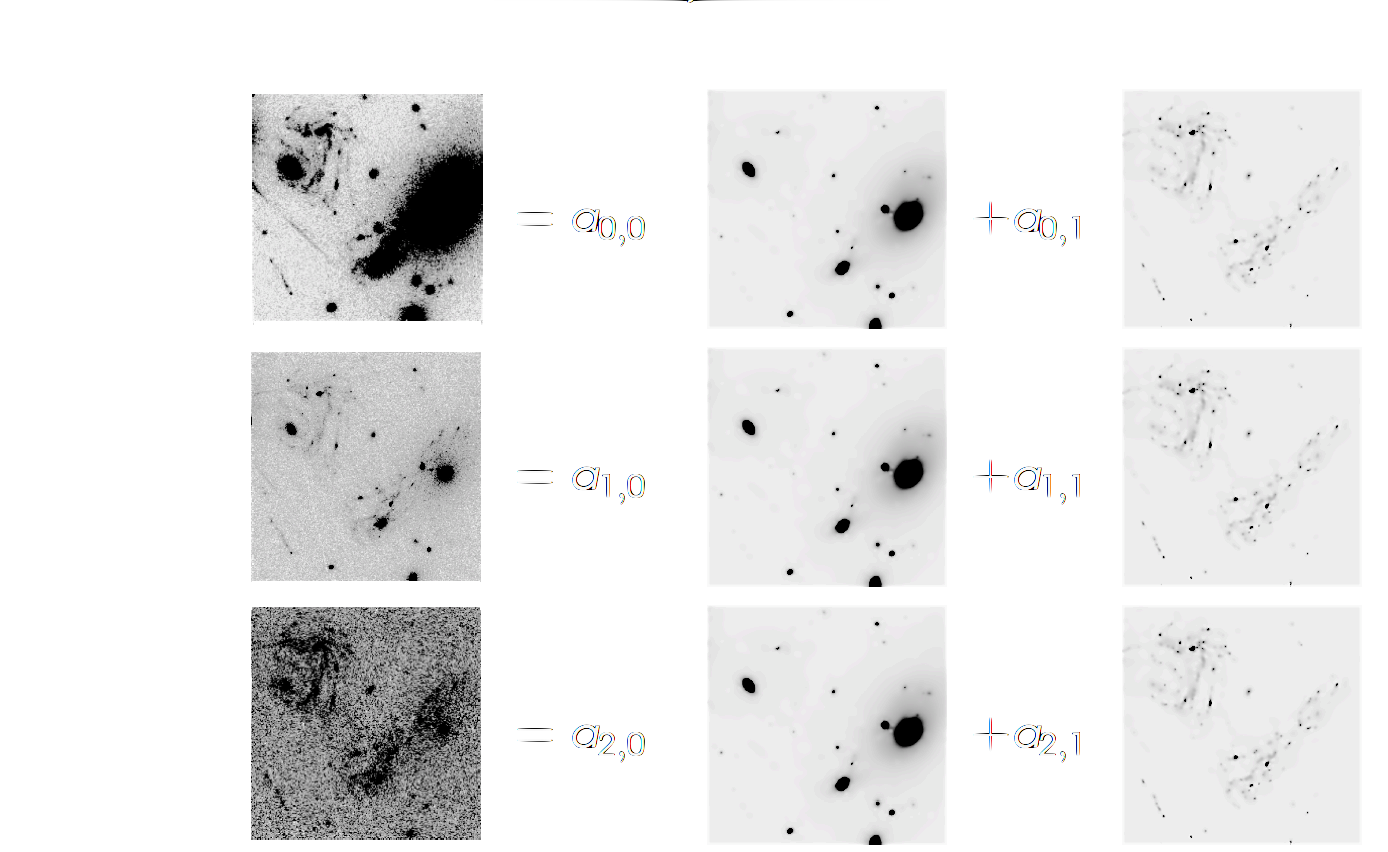
The problem of speed
\(f_2(X, Y) = \sum_{x_k, y_j} f_1(x_k, y_j) P(\frac{X}{h}-x_k, \frac{Y}{h}-y_j)\)
Reformulate to share the distance calculations along directions of constant coordinates:
\(f_2(X, Y) = \sum_{x_k, y_j} f_1(x_k-X_1cos\theta, y_j+X_1sin\theta) \times P(-Y_1sin\theta-x_k, -Y_1cos\theta-y_j)\)
\(X = hX_1cos\theta + hY_1sin\theta\)
\(Y = -hX_1sin\theta + hY_1cos\theta\)
Shifts along two directions
Side note:
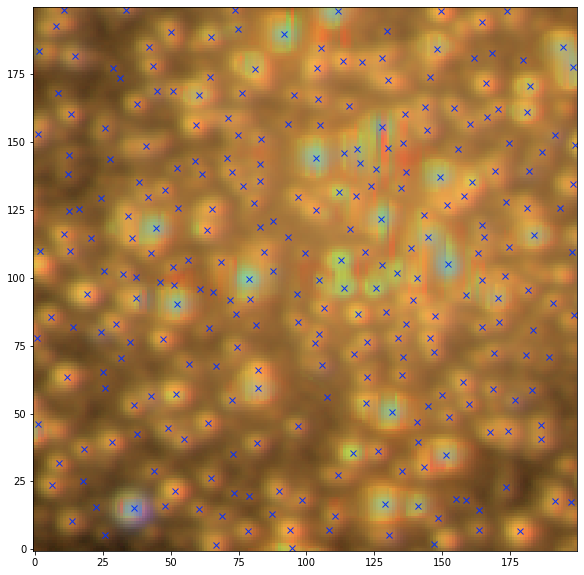
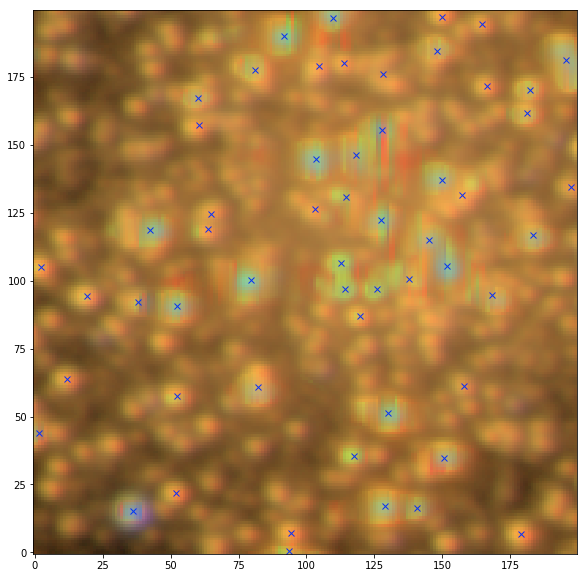
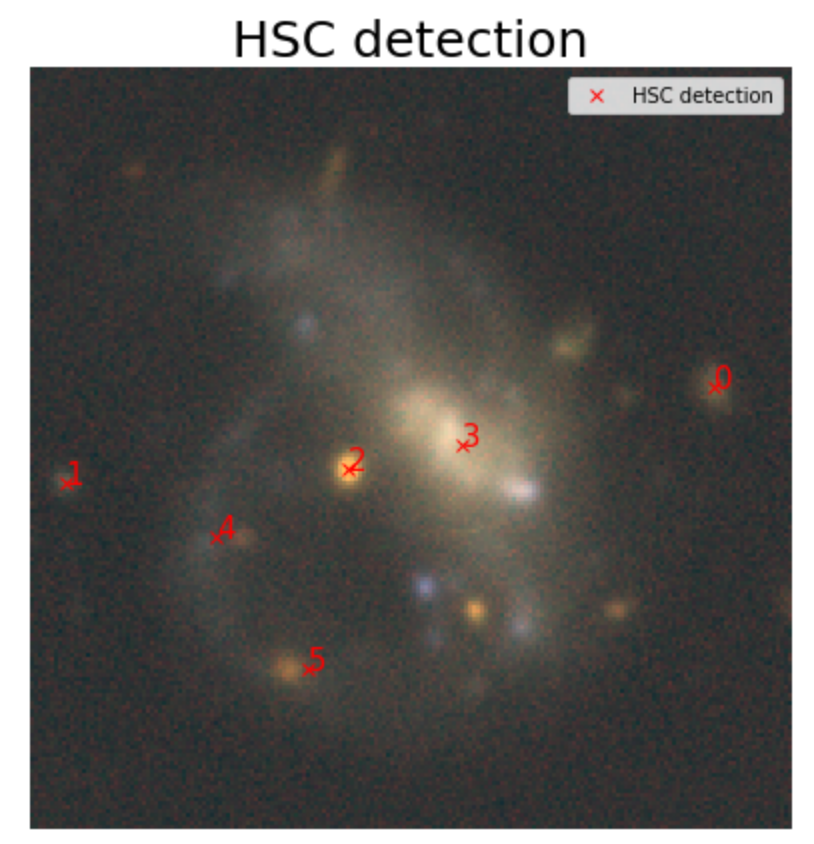
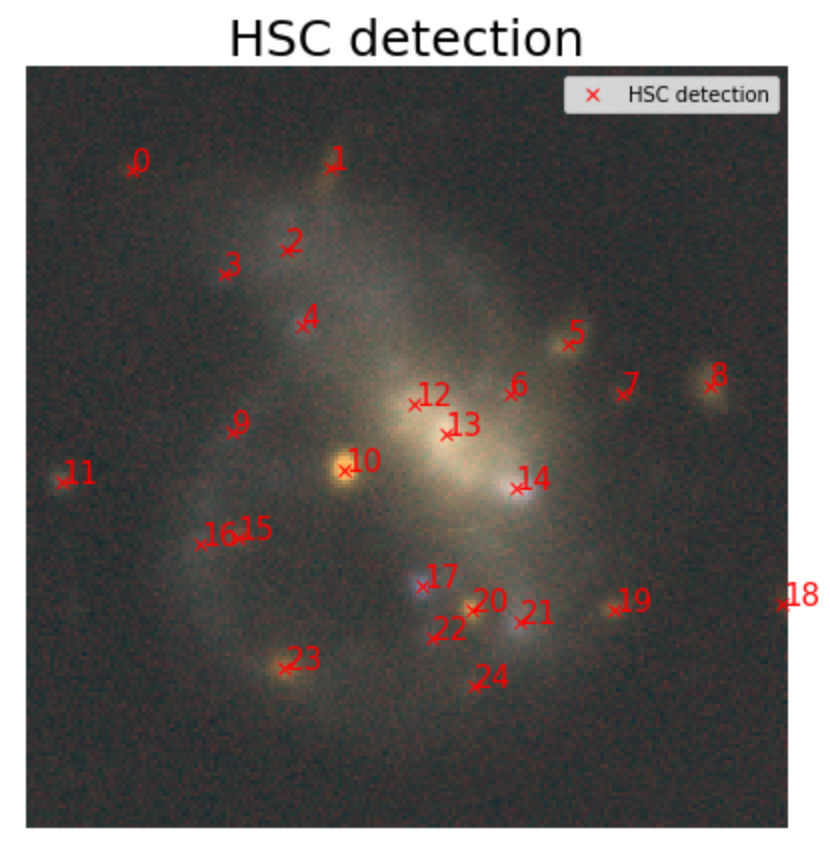
SEP detection
SEP + Starlet detection
Credit: Fred Moolekamp
Multi-resolution scarlet: Resampling, Detection and Astrometry
By herjy
Multi-resolution scarlet: Resampling, Detection and Astrometry
- 616


